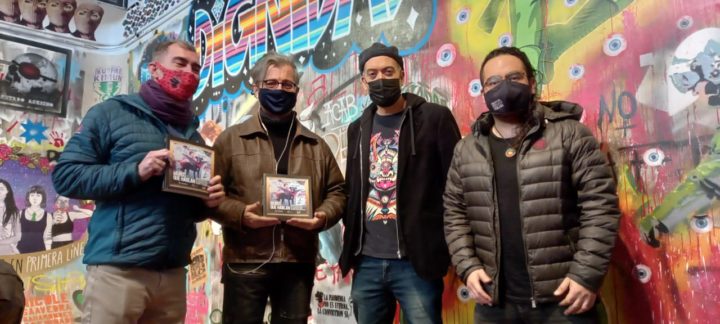This Friday May 14, the International News Agency Pressenza held the launch of the book “Muros que hablan: memoria gráfica del despertar social en Santiago de Chile. October 2019-March 2020” at the Museum of Social Uprising, located in the Bellavista neighborhood of Santiago de Chile. The publication collects in almost 300 pages the explosion of creativity that turned the walls of the capital and many cities in the country into a true living museum in the spring of 2019.
We contacted many of the graffiti artists and muralists to ask for their testimony about the works exhibited in our book. In addition, we photographed the most important demonstrations held on those dates. We collected testimonies from people from the world of the culture and the activisms, as well as ordinary citizens, in different formats. The result is a beautiful and powerful mosaic of images and voices that reflects the spirit experienced during those months.
Pablo López, in charge of content at the Museum, acted as “master of ceremonies”.
Pía Figueroa, director of Pressenza and first to speak, said: “Our agency is pleased to leave this record that the Chilean people vibrated on the same note, the same chord, the same tune to give course to their most important dreams. The work that our friends and colleagues David and Ricardo have done is truly exceptional”.
David Meléndez, co-editor of Pressenza and one of the authors of the book along with Ricardo Marinai, said that “although we are publishing it almost 4 months late, it is also an opportune moment, as we are on the verge of crucial elections for the destiny of our country. This book wants to be a reminder of the spirit we experienced in that unsubmissive spring, and the result is truly an inspiring object of collective art. We want it to remain as a testimony for current and future generations, when they look for the moment and conditions in which our country began to change”.
He then proceeded to donate two copies to the Museum’s curator, Marcel Solá, who responded by saying that “as a team of the Museo del Estallido we want to thank you for this instance, that you have chosen us to launch this great work, this great book… I take this opportunity to congratulate David and Riccardo for these tremendous records they have made. As a team we believe in the importance of taking part as citizens, communities and territories in the construction of historical memory in the present time. Works like this are key: here there are hundreds of records of artworks, interventions, performances that occurred in the street seen as a public space in dispute. That is where we have to exercise a real democracy everyday.”
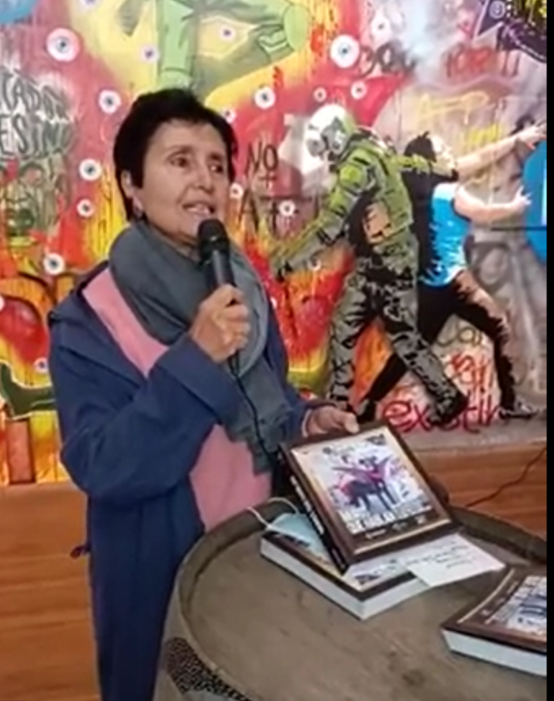
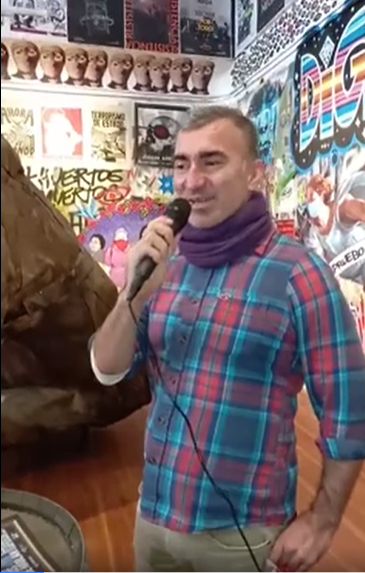
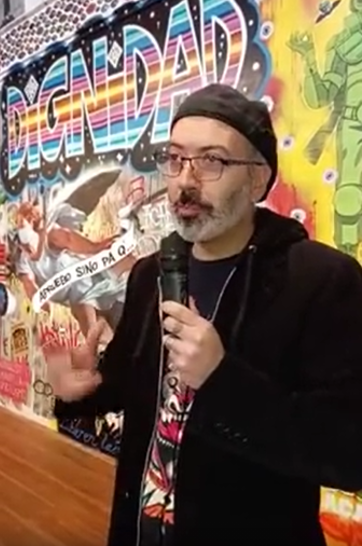
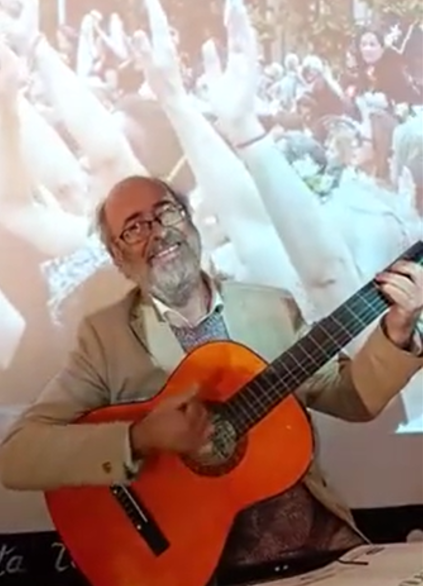
The event ended with the words of Chilean singer-songwriter and creator Eduardo Peralta, who, seated with his guitar against a backdrop of documentaries and films of the marches of the uprising, said: “For the first time I have entered this Museum of the Uprising and I have been impressed by the space and its contents. And I must also say that I am very proud that a song of mine, in poem format, accompanies some of the images in this book. That is for me a prize and a joy. This song is called `Balada tuerta`, I made it on November 21, 2019, when there were already many Chilean men and women without one of their eyes due to the repression of those days”. Then, at the request of the “large audience”, he sang “El hombre es una flecha”, a beautiful song composed in 1978 on the occasion of the international year of human rights.
The event was broadcast live and can be seen on www.facebook.com/murosquehablan.chile and Instagram @museodelestallidosocial. The book has already been on sale for a few weeks with great success on social networks and at libreriahumanista.com/shop. After this event it will also be on sale at the Museo del Estallido. Here is a preview of the first 70 pages.
In this cloud link there are wedges (short interviews) with Pía Figueroa, David Meléndez, Riccardo Marinai and Marcel Solá (curator of the Museum) and more photographs, made by our documentary filmmaker and friend Florencia Doray (thank you!).


